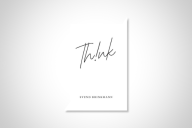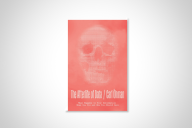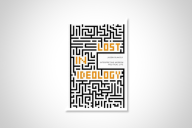You have /5 articles left.
Sign up for a free account or log in.
A couple of months ago I interrupted several years of procrastination and finally got around to a time-consuming bit of housework: unpacking each volume from every shelf in my library, flipping it (the shelf that is), and then putting the books into a more orderly state than they had been in a long time. It was the work of several days. The shelves are thick and sturdy, but they had borne two rows of books, plus whatever could be fitted in horizontally, for more than a decade. With a dozen tiers to process -- at eight shelves per tier, and 25 to 50 volumes per shelf -- I had an incentive to build up all the mindless, robotic momentum possible. Stopping to read anything was strictly forbidden, for all the good that did.
They were, and still are, organized alphabetically by author’s name. Friends occasionally express dismay at this. It seems the most impersonal system possible short of arranging them by color. But putting them back on the shelf -- after sifting and sorting them, and a lot of dusting -- proved anything but impersonal. It was comparable to reading an old journal – that is, an experience of numbing repetitiveness, interrupted by melancholy and embarrassment. Several volumes have inscriptions from friends who have died. My copy of the collected Edgar Allan Poe was a Christmas present from pre-adolescence, when bookplates evidently struck me as the height of sophistication. What is stranger -- the extensive academic literature concerning UFO-based religions, or the fact that I seem to own all of it?
Memory kept sabotaging discipline. It’s amazing the job ever got done. The same cannot be said of winnowing through a couple of filing cabinets loaded with photocopies, a week or so later, which involved no more complex sentiment than a kind of satisfying ruthlessness. And with digital text, you don’t even get that. Every so often I copy all the e-books and article PDFs from the laptop to a flashdrive, which then gets dropped into a coffee cup on my desk, along with the others. Sorting and purging the e-library hardly seems worth the effort. Any item in it can be located and extracted within a few minutes. I have no fond memory of acquiring any of them. Downloading a book from Amazon must be consumerism at its most disenchanted. For that matter, thinking back on the e-books I’ve read, what comes to mind is almost always information, rather than the experience of reading them.
Andrew Piper’s Book Was There: Reading in Electronic Times (University of Chicago Press) occupies a niche somewhere between a couple of fields of study that were already interdisciplinary. One is the history of the book, from scroll to e-reader. The other is a phenomenological psychology of reading – an effort, that is, to describe the concrete experience of engaging with the written word, which involves more than the sense of sight, or even the neural processes that somehow convert squiggles into meaning.
“Books have been important to us,” Piper writes in a passage that made me glad to have read him, “because of the way our interactions with them span several domains of sensory and physical experience. Whether it is through the acts of touch, sight, sound, sharing, or acquiring a sense of place, [our] embodied, and at times impersonal, ways of interacting with books coalesce to magnify the learning that takes place through them. The same information processed in different ways and woven together is one of the profound secrets of bookish thought."
Piper, an associate professor of languages, literature, and culture at McGill University, in Montreal, won the Modern Language Association Prize for a first book Dreaming in Books: The Making of the Bibliographic Imagination in the Romantic Age (2009), also published by the University of Chicago Press; and his paper “Rethinking the Print Object: Goethe and the Book of Everything” (2006) received the Goethe Society of North America’s annual essay prize. While no less grounded in European cultural history than his earlier work, Book Was There (its title taken from Gertrude Stein) is more digressive and memoiristic. Parenthood supplements scholarship: one of his children learned to read as Piper was writing the book; his reflections on reading as an aspect of self-fashioning are at least partly grounded in family life.
His intent is not -- as the subtitle “Reading in Electronic Times” might suggest -- a screed against the e-text flood. Book Was There shows a wide knowledge of contemporary digital art and literature, and Piper makes a brief mention of his role in a collaborative project to create a computer model of the impact of The Sorrows of Young Werther on subsequent literature. Like anyone who has given the matter more than a soundbite’s worth of thought, he recognizes that the relationship between the cultural system now emerging and the previous thousand years of human civilization involves both continuities and disruptions, for both better and worse.
What Piper does insist on is the specificity of how we interact with text when incarnated as the artifact of the three-dimensional book. This begins with the hand, which navigates through a bound volume in a way distinct from the turning of a scroll or the button-punching we do on Kindle or Nook. (For one thing, the ancient and the digital format resemble each other at least as much as either does the codex or a book from the Gutenberg era.) One of Piper’s core ideas, radiating out in several directions throughout the book, is that the sense of touch creates “a form of redundancy” in the overall experience of reading, “enfolding more sensory information into what we see and therefore what we read.”
Someone who has lived closely with a given volume for a long time will have a sense of what Piper means. Even without bookmarks or notes, you often know how to look up something in it fairly quickly. The citation is also a location which you can (literally) feel your way to finding.
But there is more to it than that. “As early as the twelfth century,” Piper notes, “writers began drawing hands in the margins of their books to point to important passages. Such a device gradually passed into typescript and became a commonplace of printed books.” And in that regard it mimicked the book’s own role in pointing to specific aspects of the world – making them, in a hand-related analogy, “graspable.” (The implicit contrast here would be the link, which serves as another way to direct the reader’s eyes, but with the constant risk of diffusing attention instead of directing it.)
Handwriting is another mode of engagement with text -- one considerably less efficient than today’s cut-and-paste norm, as Piper acknowledges, but of value precisely for its slowness, which permits incorporation of meaning rather than the aggregation of content. He cites research showing a significant relationship between writing by hand and drawing:
“Early elementary school students who draw before they write tend to produce more words and more complex sentences than those who do not. And as historians of writing have shown, writing makes drawing more analytical. It allows for more complex visual structures and relations to emerge. As Goethe remarked, word and image, drawing and writing, are correlates that eternally search for one another. Handwriting is an integral means of their convergence.”
Cyberculture is all about convergence, if not in Goethean terms. It overloads the reader’s sensorium through every conceivable channel of communication (preferably at the same time) while bombarding us with invitations to respond to its messages, right away. “Interactivity is a constraint,” Piper writes, “not a freedom.” As if glossing his point, a satirical article in The Onion recently reported that Internet users had had enough. “Nobody needs to get my immediate take on everything I see online,” it quotes one woman as saying. “…. At best I’m just going to parrot back some loose approximation of what I’ve heard before, which will just prove that I never should have weighed in in the first place.”
Piper suggests that reading of the older sort provokes a kind of anxiety in the culture now because of its seeming isolation and inertia – so out of step with the drive for connectivity, quantifiable impact, and a rapid turnover in goods and services. But -- to continue his point -- the physical inertia tends to generate a much more intense internal dynamism, making for more complex and lasting patterns of meaning.
That sounds right. Given the limits of space, my acquisition of hardbacks and paperbacks must slow down; at this point, the ones on hand are saturated enough with significance to last the rest of my days. But the e-texts filling my coffee cup can accumulate as rapidly as ever. No shelf bends under the weight, and their imprint on my memory is like footprints in the snow.








